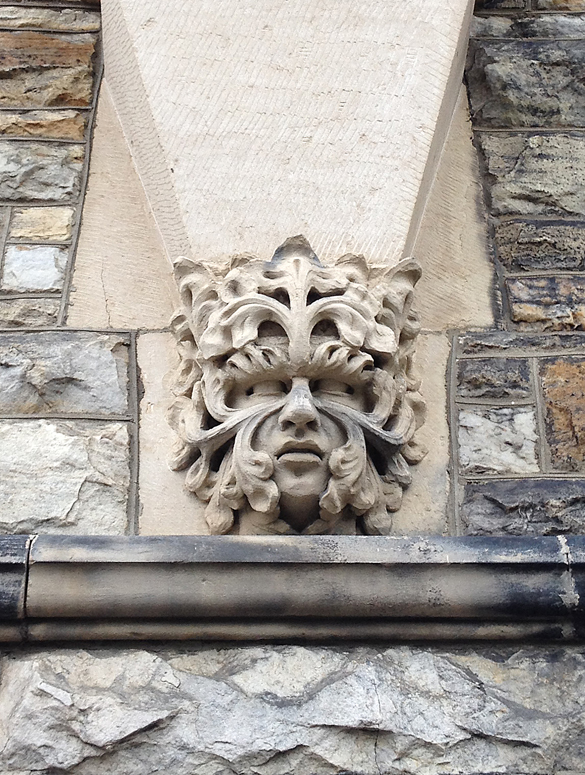Green Man 1
During my recent perambulation of Parliament’s East Block, I was chuffed to come across an old friend on the north wall.

He goes by the name of the Green Man – a modern moniker for a figure that is at least two thousand years old. He is often shown, as here, surrounded by foliage, or wearing a foliate mask. Other times he is disgorging foliage. I was first introduced to the Green Man many years ago by a renowned English potter named Alan Caiger-Smith. Alan sometimes painted Green Men onto large bowls, and regarded him as what his friend William Anderson (author of a book on the Green Man) called an “archetype of our oneness with the earth.”
As a great lover of the wilderness and of camping as well as art, I immediately fell in love with the Green Man. Here, at last, was an image of what I felt when I unpacked my tent under a protective canopy of trees in Algonquin Park. Of course, it didn’t hurt that the Green Man appeared most often on buildings – especially medieval buildings. And, of course, on medieval revival buildings, like the East Block.
There was one other reason I was so delighted to stumble across the Parliamentary Green Man. I immediately recognized him as the stone prototype for a beautiful cast Green Man that I had acquired at the Canadian Stone Carving Festival in August.

This cast was made by the stone-carvers at Smith and Barber, an Ottawa atelier that produces a wide range of really exceptional work. I have since learned that they have made several Green Men, including three spectacular examples on the front of their workshop building.
That this millennia-old image continues to capture the imagination of artists in the twenty-first century is quite amazing. That we don’t really understand what he meant to the artists who made him ubiquitous hundreds and thousands of years ago merely adds to his mysterious fascination. Somehow, this conflation of the human and vegetable worlds has spoken eloquently to us across time and against all rational understanding.
In future blogs, I will delve more into the historical roots of this compelling and beautiful figure. For now, I am happy simply to note that he is very much still with us, and around us, in Ottawa.